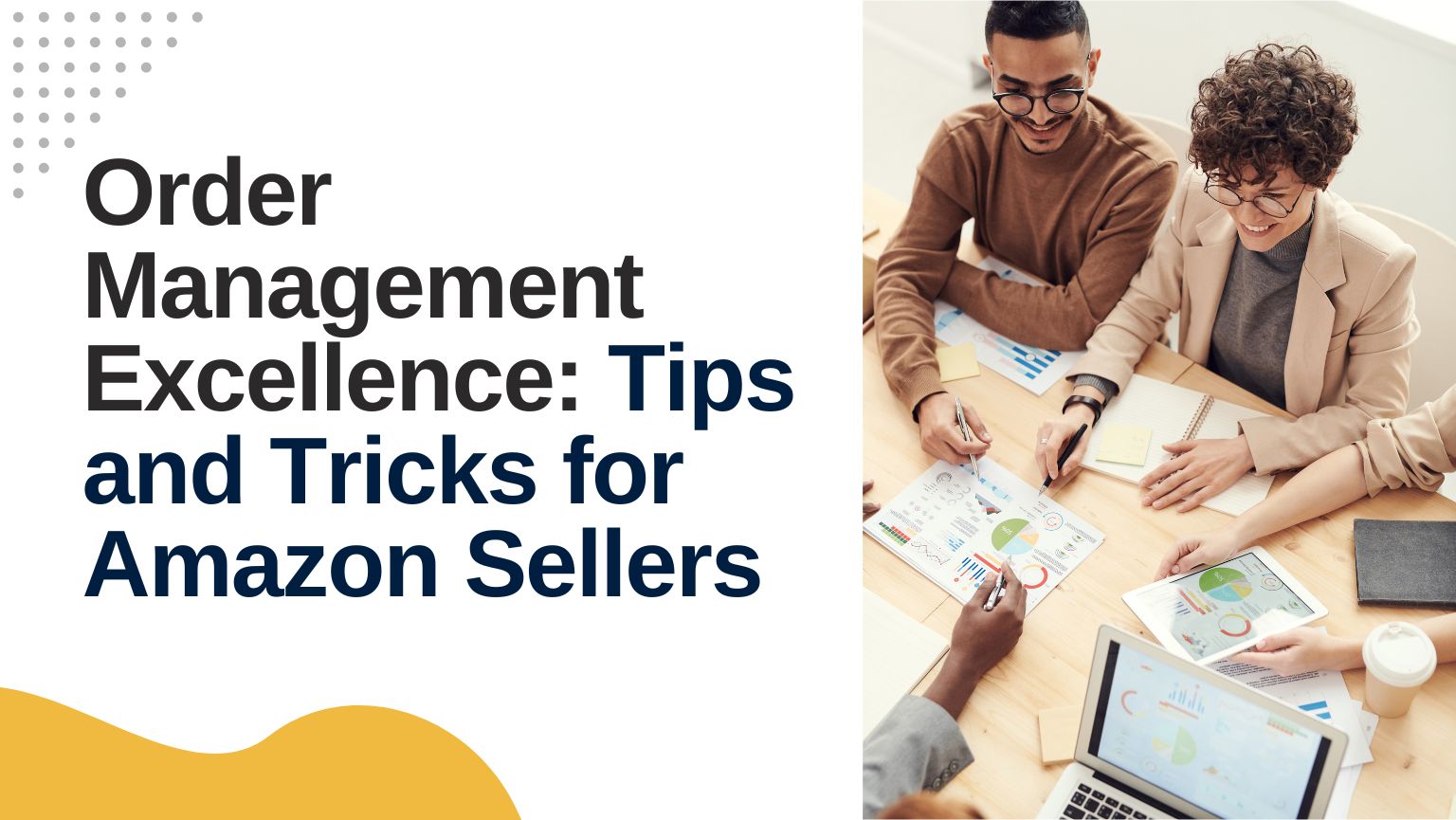
Order Management Excellence: Tips and Tricks for Amazon Sellers
Efficient order management is the backbone of a successful Amazon selling journey. From the moment a customer clicks “Buy Now” to the final delivery, every step in the order fulfillment process matters. Managing orders on Amazon is a crucial aspect of running a successful e-commerce business. Here’s a step-by-step guide on how to effectively manage your orders on Amazon:
1. Access Your Seller Central Account:
Log in to your Amazon Seller Central account using your seller credentials.
2. Navigate to the Orders Dashboard:
Once logged in, go to the “Orders” tab in your Seller Central dashboard. Here, you’ll find an overview of your recent orders.
3. Review Your Orders:
Check the list of orders to see the details of each transaction, including order ID, customer information, and order status.
4. Order Status:
Understand the various order statuses:
Pending: Order is placed but payment is pending.
Unshipped: Payment is confirmed, and the order is ready to be shipped.
Shipped: The order has been shipped, and tracking information is available.
Canceled: The order has been canceled, either by the customer or the seller.
5. Manage Unshipped Orders:
For unshipped orders, click on “Manage Orders” and then “Manage Order” next to the specific order. Here, you can confirm shipment, print packing slips, and notify the customer.
6. Shipping Confirmation:
Confirm shipment by entering the shipping details, including carrier, tracking number, and shipping date. This step is crucial for maintaining good seller metrics.
7. Handling Returns and Refunds:
If a customer requests a return or refund, manage these requests through the “Manage Orders” section. You can issue refunds, authorize returns, or communicate with the buyer about the return process.
8. Monitor Order Metrics:
Regularly check your order metrics, such as Order Defect Rate (ODR), Late Shipment Rate, and Pre-fulfillment Cancel Rate. Keeping these metrics within Amazon’s acceptable limits is vital for maintaining a healthy seller account.
9. Set Up Order Notifications:
Configure your account to receive order notifications via email or the Seller Central app. This ensures that you are promptly informed of new orders and can take immediate action.
10. Utilize Fulfillment by Amazon (FBA):
– If you use Fulfillment by Amazon, let Amazon handle the shipping and customer service for your orders. Monitor FBA orders and address any customer inquiries or issues promptly.
11. Batch Processing Orders:
– For sellers with a high volume of orders, use batch processing tools in Seller Central to manage orders efficiently.
12. Keep Inventory Updated:
– Regularly update your inventory levels to avoid overselling or running out of stock. Use Amazon’s inventory management tools to track and manage your product quantities.
13. Communicate with Customers:
– Maintain open communication with customers. Respond promptly to inquiries, provide accurate information, and address any concerns professionally. Positive customer interactions contribute to good seller feedback.
14. Leverage Order Reports:
– Utilize order reports available in Seller Central to analyze your sales data, identify trends, and make informed decisions about your inventory and marketing strategies.
15. Stay Informed:
– Stay updated on Amazon’s policies and any changes to the order management process. Regularly check your seller inbox and the Amazon Seller Forums for announcements and updates.
Effectively managing your orders on Amazon involves a combination of organization, prompt action, and clear communication. By staying on top of your orders and providing excellent customer service, you can build a positive reputation on the platform and contribute to the success of your e-commerce business.
The Price of Success: Calculating Profitability Amidst Amazon Fees
Amazon disburses payments to sellers through a system called Amazon Payments, and the timing of these payments depends on several factors, including the type of account, the payment method selected, and the region in which you are selling. Here’s a general overview:
1. Payment Frequency:
Amazon typically disburses payments to sellers every 14 days.
Payments are made every two weeks, and the specific day may vary based on your account and location.
2. Amazon Payment Methods:
Sellers can receive payments through Electronic Funds Transfer (EFT) or by check.
EFT is a faster and more efficient method, as funds are directly deposited into the seller’s bank account. Checks, however, may take longer due to mail and processing times.
3. Payment Threshold:
Sellers must meet a minimum payment threshold before receiving disbursements.
The threshold varies by country and currency. In the United States, for example, the threshold is $1 for EFT and $20 for checks.
4. Amazon Seller Account Type:
The type of seller account (Individual or Professional) can impact payment timing.
Professional sellers usually have access to more features, including the ability to set up an Amazon Payments account and receive disbursements more frequently.
5. Payment Processing Time:
After the payment is initiated, it may take additional time for the funds to appear in your bank account.
The processing time depends on your bank and the banking system in your country.
6. Holding Period for New Sellers:
New sellers may experience a holding period before they receive their first payment.
This is a security measure to ensure that the seller is legitimate and the transactions are valid.
7. Payment Statement:
Amazon provides a detailed payment statement that breaks down the components of your payment, including sales, refunds, fees, and other adjustments.
8. Viewing Payments in Seller Central:
Sellers can track their payments and view detailed statements in their Seller Central account.
Navigate to the “Reports” section to access payment-related information.
9. Currency Conversion:
For international sellers, currency conversion may apply, and the timing of payments can be influenced by exchange rates and the policies of the receiving bank.
10. Amazon Currency Converter for Sellers (ACCS):
For international sellers, Amazon offers the Amazon Currency Converter for Sellers, a service that allows you to receive disbursements in your local currency.
11. Adjustments and Withholdings:
Amazon may make adjustments or withhold funds for various reasons, such as refunds, chargebacks, or potential account issues. It’s essential to monitor your payment statements for any such adjustments.
To ensure a smooth payment process, sellers should maintain accurate account information, including bank details, in their Seller Central account. Additionally, understanding the specific terms and conditions related to payments in the seller agreement is crucial for a clear understanding of Amazon’s disbursement policies. If there are any issues or concerns regarding payments, sellers can reach out to Amazon Seller Support for assistance.





